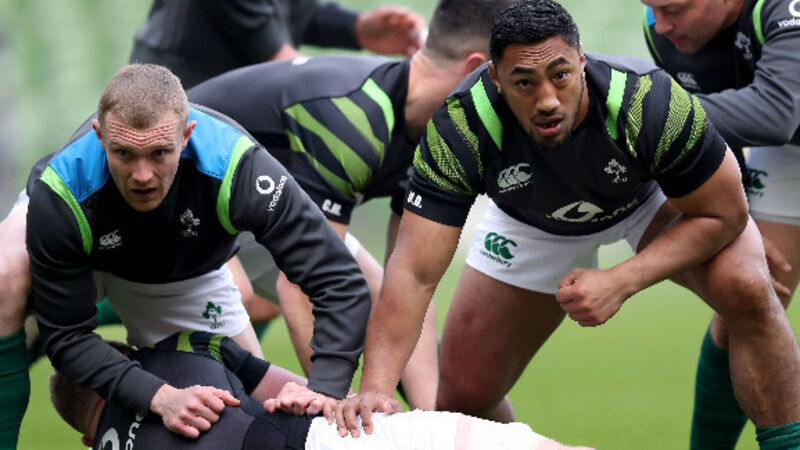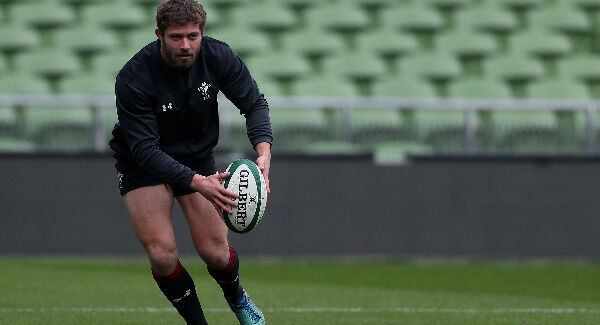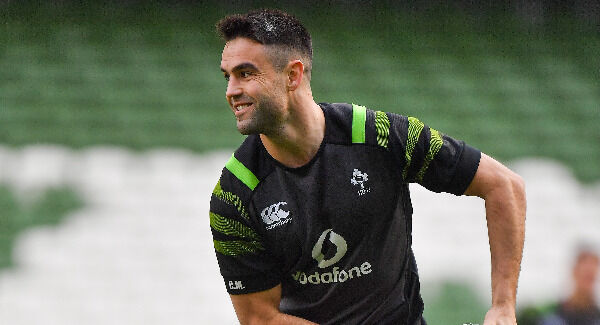Inches are everywhere, in every break of the game

It’s Wales but not as we know them
The one thing that would have appealed to Joe Schmidt’s forensic approach towards preparing a side to meet Wales in recent years was the near certainty that you knew exactly what was coming before it happened.
Wales had a very distinctive, direct style that was built around generating forward momentum. They always carried in the same direction, edging towards the touchlines with their big runners in midfield and with the back row charged with getting over the gain line and recycling quickly, looking to create mismatches in the opposition defensive line.
They backed their physicality in contact and fitness to force the opposition into conceding penalties, to be punished by the boot of Leigh Halfpenny. While it proved very successful in the Six Nations, it simply didn’t work against the big southern hemisphere sides.
Wales had to change.
With immaculate timing, the Scarlets (under Warren Gatland’s likely successor Wayne Pivac) has captured the imagination in Wales with their all-action, wide offloading game with backs and forwards interacting seamlessly.
With so many injuries heading into their opening game against Scotland, Gatland had no choice but to promote a number of Pivac’s high performing side - ten in his starting team - and successfully replicated their all-action style.

In truth, after the lessons learned on the Lions tour, he was shifting to a more expansive game anyway by seeking to employ two playmakers in the same way he used Johnny Sexton and Owen Farrell in that series.
The ease with which Wales made that shift caught many by surprise, not least the Scots. A key element is that all of Gatland’s forwards are very comfortable with ball in hand, enabling Wales to achieve great width and continuity in their game.
Of even more significance, they have sacrificed none of their ability to smother the opposition with their aggressive line speed.
This presents a new challenge for Schmidt who has found it difficult to get the better of Wales in recent meetings. When Ireland defend too narrow, they have been exposed by teams who can get the ball wide quickly.
With Liam Williams, Steff Evans and George North available to take advantage of that possibility, Ireland will need to be primed for those Welsh raids down the wide five metre channels.
The only caveat is the fact that Dan Biggar, great player and all that he is, is the only non-Scarlet past or present in the back line and he is being tasked with operating as a link player rather than the director of operations role he normally does so well. It will be interesting to see how he copes.
Defensive kings in opposition
For Shaun Edwards and Andy Farrell, the highly influential defensive coaches in opposition today, this is personal. Both are decorated legends of the rugby league code having shared the Wigan dressing room for six years during a massively successful period for the club and remain great friends.
As Gatland’s trusted lieutenant at Wasps and for a decade with Wales, Edwards was hugely disappointed when, having worked as Lions defence coach on the 2009 tour of South Africa, Gatland appointed Farrell to the same role on the 2013 and 2017 tours.
Since Farrell joined the Irish coaching ticket after the 2015 World Cup, Edwards has enjoyed the better of their coaching duels with a draw in Dublin two years ago and a merited 22-9 win in Cardiff last season when, with his famed blitz defence, Ireland were held tryless.
In fact, Ireland have only scored two tries in the last three championship outings against that Welsh defensive structure.
Despite the concession of two soft tries in the opening quarter at Twickenham last time out, the understrength Welsh went on to keep England scoreless for the remaining 62 minutes. Having worked with so many of the Welsh backline on successive Lions tours, Farrell will be well versed in the way the Welsh like to defend.

With a new midfield combination with a mere six caps and one competitive outing together, Farrell has had to focus on fine-tuning the responsibilities of Bundee Aki and Chris Farrell on both sides of the ball.
He will be aware that Scarlets often target Aki when playing for Connacht given that he has a tendency to shoot out of the defensive line and create a disconnect.
Scarlets did that to good effect against Munster in the Pro12 final last season when Francis Saili had a similar habit. Jared Payne and Robbie Henshaw have been Farrell’s on-field defensive generals in recent seasons and in their absence, Wales will ask questions of that new centre pairing.
Despite those injury-enforced changes, the Welsh defensive effort has remained as strong and difficult to break down as ever. They have only conceded 19 points in their two championship outings to date.
It also underpins the confidence and self-belief that enabled them to cope with a catastrophic injury list with relative ease.
Farrell and Schmidt must find a way to break that today.
Battle of the boot could decide it
Ireland carry an advantage in the accuracy and effectiveness of their kicking game. Wales kicked badly in possession at Twickenham and competed poorly in the air on kick receipts.
Gatland has sought to rectify this, in the certainty that they will be tested, with the inclusion of Liam Williams and Leigh Halfpenny to cover the back field.
Bigger will also bring a different dimension to the aerial battle, not least when it comes to retrieving his own kicks. Wales are worried about the accuracy Sexton and Conor Murray bring with their kicking game.
Gatland will seek to limit the time available to Sexton by having him blitzed from the inside by one of his back rowers, most likely Josh Navidi, and on the outside with Bigger tasked with suffocating him.
Schmidt must engineer a way to exploit that as space will become available elsewhere. Their desire to flood the midfield and leave only two players covering the backfield also puts fierce pressure on Halfpenny that Ireland must exploit.
Wales will also try and deny Ireland a lineout platform to launch their effective maul and will seek to avoid kicking dead at all costs.

If Murray and Sexton can land their kicks in the five metre channel with sufficient hang time to enable Keith Earls and Jacob Stockdale pressurise the receiver and force him into touch, Ireland will get that maul platform in Welsh territory despite the visitors’ best efforts.
With Tadhg Furlong and Iain Henderson ruled out, Gatland will now chase Ireland in the set piece early on to test the talented but inexperienced Andrew Porter and James Ryan.
In the knowledge that Porter has only a handful of starts as a tighthead prop, Wales will examine his credentials in the first few scrums. If he survives that early test, he will be fine.
Ireland needed 62% possession to win their opening two games against teams not as defensively adept as this Welsh side.
Therefore they will have to be smarter and more inventive with the ball while also achieving the right balance in terms of committing numbers to the breakdown.
If the half-backs can dictate the territorial battle and the new midfield strike the right balance both in attack and defense, Ireland should just about prevail in what is sure to be another tight encounter.














